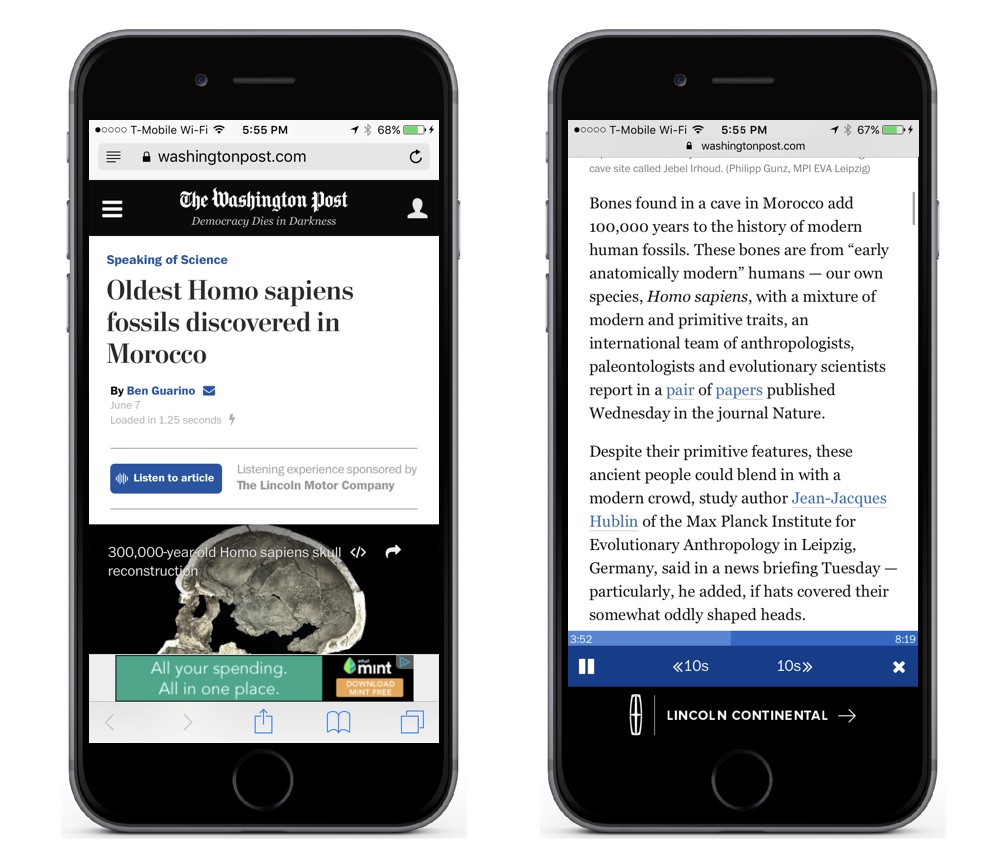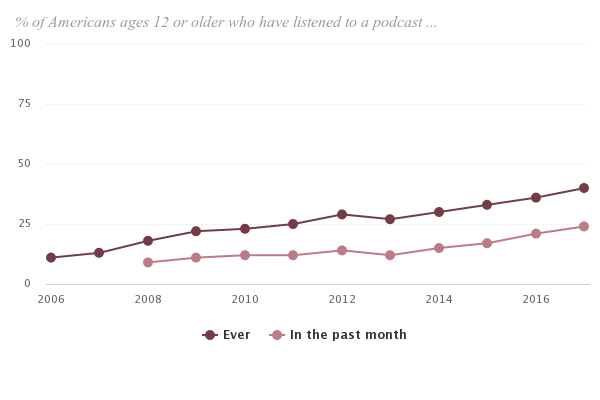The last Washington Post column I came across was only interesting because a computer read it to me.
Amazon Polly is a text-to-speech service that sounds like a cross between a customer service agent and Siri. Its “lifelike” reading is dispassionate, and each comma prompts an overly long pause between words. Yet, I found myself listening to several articles for at least a few minutes apiece as I stared into empty space at work.
And that’s exactly what The Post is shooting for.
“Audiences are getting more comfortable with audio usage and building that into the fabric of their lives,” said Joseph Price, senior product manager at the newspaper. “One thing that we are happy with is that those who do start listening are listening a surprising amount.”
For the next month, the newspaper will let its mobile users listen to four audio versions of business, lifestyle, technology and entertainment stories daily using Polly, a web service from Amazon. The Post, which is owned by Amazon founder Jeff Bezos, worked with launch sponsor Lincoln Motor Company to decide what kind of content to curate for the experiment, Price said. The newspaper’s signature political stories are not currently included among the voice articles.
More than 25 percent of Post readers who choose to press play on select voice articles are listening to the entire thing, on average, Price said. That’s not bad considering each audio recording is about five to six minutes long, and most news organizations would be happy to have readers stay on pages for half that time. And it’s only been a week since The Post announced the experiment.

The Washington Post
Despite widespread interest in the newspaper’s experiment of Amazon’s text-to-speech service, it’s just that — an experiment.
“We know it’s not for everybody,” Price said. “I don’t think this is how users want to engage with this technology. Long term, I think the best kind of interaction model for this is either personalized or curated playlists that would serve a whole bunch of articles.”
Audio services for news articles are nothing new. Pocket, the popular smartphone app that allows users to save articles for later, has a text-to-speech feature called Listen that employs devices’ built-in text-to-speech functionality. Google has an Android app with a similar feature, as does Dragon NaturallySpeaking. Want to skip the middlemen? iPhone users can turn on the Speak Screen option in their settings and Siri will read any webpage back to them.
So why is The Post experimenting with Polly if these tools already exist? Price says readers want to “hear the front page” directly from the newspaper.
“Users say they’re hungry for more audio from The Post,” he said. “That’s our vision — to have more audio content, to unlock our articles for broader consumption.”
It’s easy to see why. According to the Pew Research Center’s recent State of the Media report, more Americans are tuning in to internet radio than ever before — especially in the car — and the proportion of people who listen to podcasts has grown substantially since only a few years ago. Major news organizations such as The New York Times, NPR and The Post itself have invested in a wide array of new podcasts, from Times reporter Michael Barbaro’s wildly successful general news show, The Daily, to Rachel Martin, David Greene and Steve Inskeep’s competing show, Up First.

Pew Research Center
But beyond providing The Post’s audience with alternative ways to consume the newspaper’s journalism, Price said his team hopes the Polly experiment will provide a much-needed tool for users with vision impairments. He has specifically been working with Post editor Peter Wallsten, whose vision is deteriorating due to Stargardt’s disease, to explore the best ways to reach people who could not normally read the newspaper’s stories.
“A lot of people kind of suffer silently, and a lot of people don’t know how to get the tools that will help them,” Price said. “We can potentially make it really really easy to engage with our content by giving them a simple play button.”
In the coming weeks, Price said The Post will continue to experiment with Polly’s text-to-speech functionality, specifically aiming to improve the humanlike quality of its voice. The technology behind the service is similar to that of other Amazon products, such as Alexa and Echo, and since Polly integrates well into the newspaper’s back end, Price said making alterations should be relatively flexible. Future features may include offline audio playback, personalized playlists, dynamic updates for in-text audio and integration into the Post’s native app family.
“As it stands today, it’s not as good as human-read audio, but what it does have is the ability of us to scale it,” Price said. “Polly is a generational leap from existing text-to-speech services.”
Readers can listen to pilot audio articles here on mobile devices.






